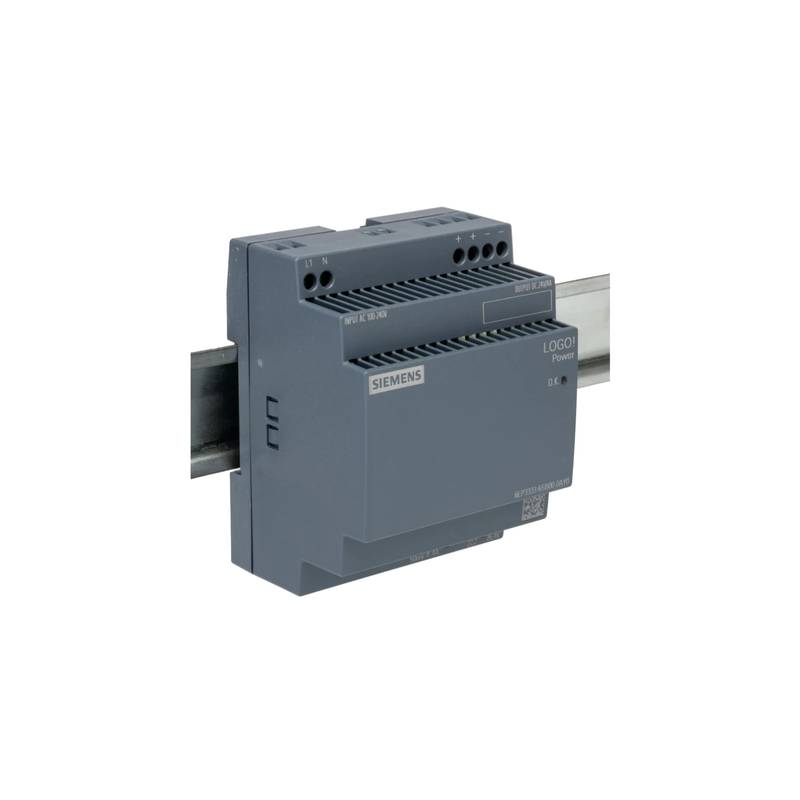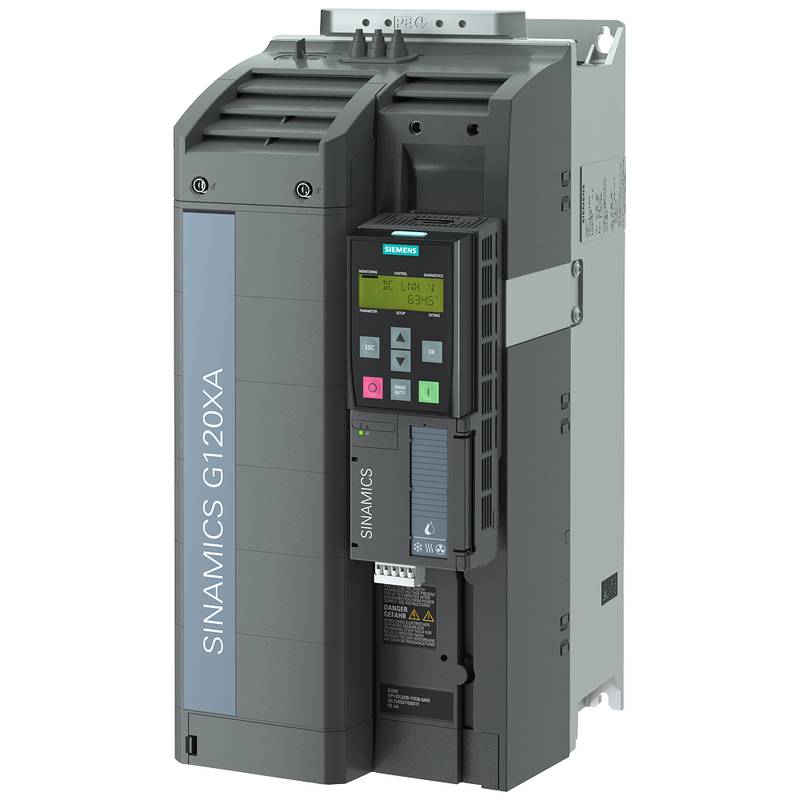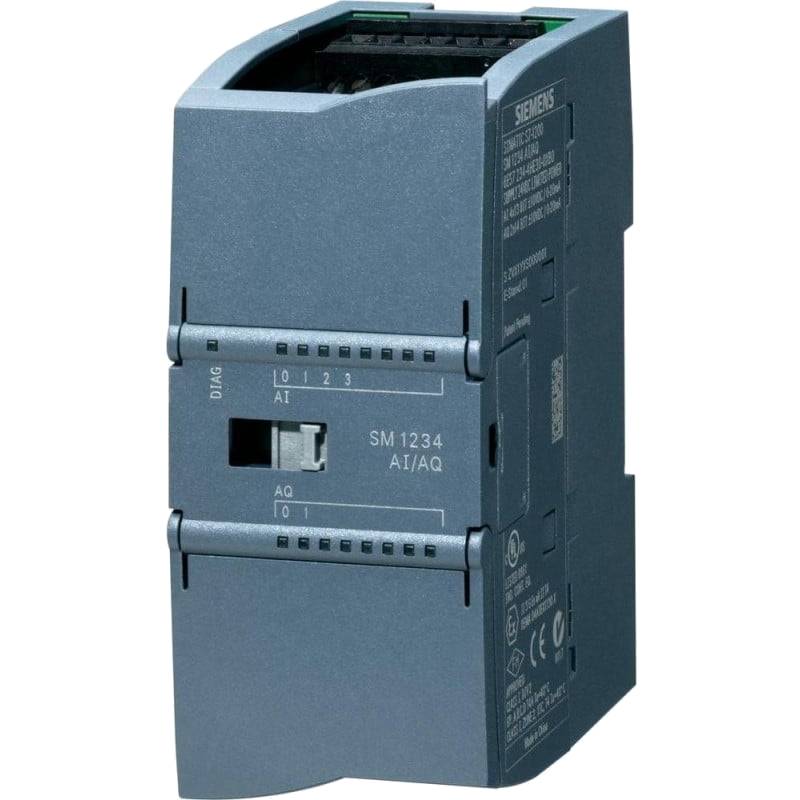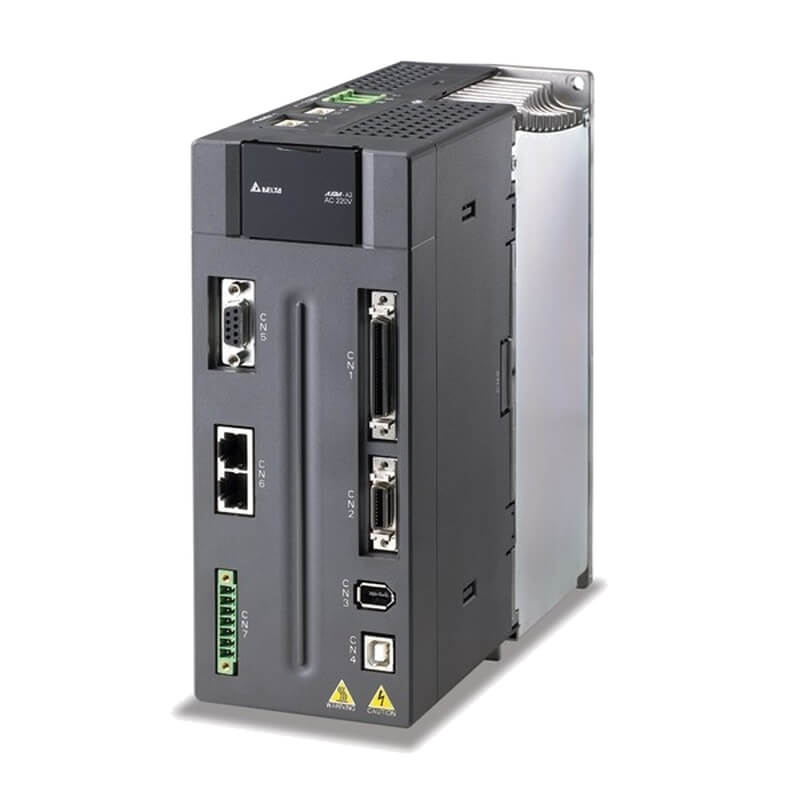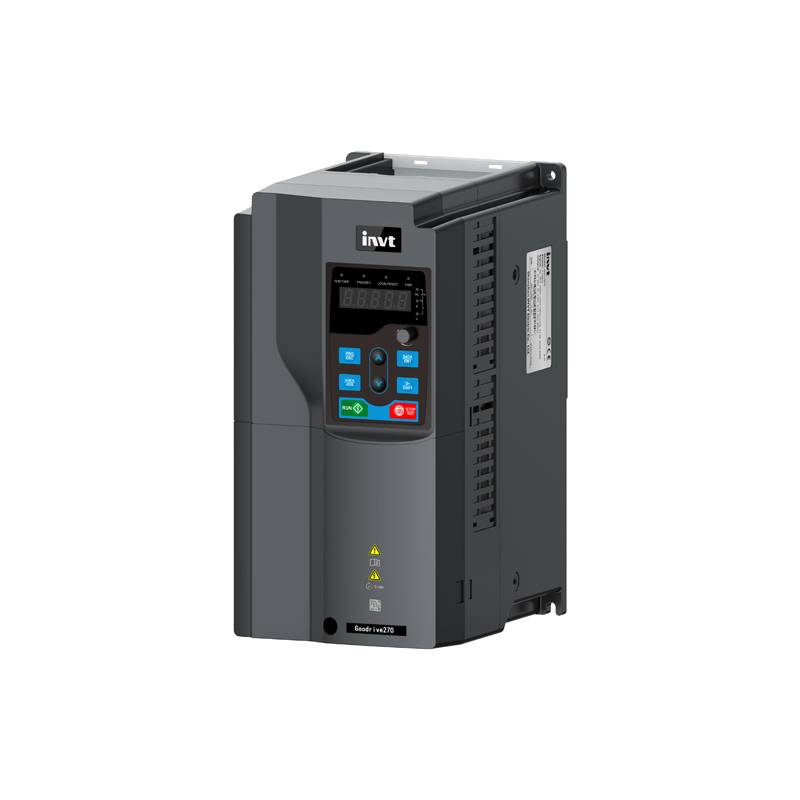
The Siemens 5SU9356-7KK40 is a high-performance double-pole Residual Current Circuit Breaker with Overcurrent protection (RCBO), designed for robust electrical safety in demanding industrial and commercial applications. This 40A, 30mA unit offers a crucial combination of overcurrent and earth fault protection in a single, compact device, simplifying installations and enhancing system reliability. Its Type C tripping characteristic ensures it can handle moderate inrush currents typical of inductive loads without nuisance tripping, making it ideal for protecting circuits with motors, transformers, and lighting systems. The 1P+N (single-pole + neutral) configuration is vital for single-phase applications where both live and neutral conductors require simultaneous disconnection, a critical safety feature for preventing dangerous residual voltages.
Product Specifications
| Feature | Specification |
| :---------------------- | :------------------------------------------------- |
| Product Type | RCBO (Residual Current Circuit Breaker with Overcurrent protection) |
| Pole Configuration | Double Pole (1P+N) |
| Rated Current (In) | 40A |
| Rated Residual Current | 30mA |
| Tripping Characteristic | Type C |
| Breaking Capacity (Icn) | 6kA |
| Voltage Rating | 230/400V AC |
| Frequency | 50/60 Hz |
| Terminal Type | Screw Terminals |
| Mounting Type | DIN Rail (35mm) |
| Protection Class | IP20 (enclosure), IP40 (with cover) |
| Operating Temperature | -25°C to +45°C |
| Certifications | IEC/EN 61009-1, IEC/EN 60898-1 |
Core Features & Market Positioning
The Siemens 5SU9356-7KK40 stands out in the market due to its integrated dual protection, significantly reducing panel space and installation time compared to using separate MCBs and RCDs. Its Type C tripping curve is a key differentiator, providing enhanced immunity against transient overcurrents, a common challenge in industrial settings. This reduces unnecessary disconnections, improving operational continuity. Siemens' reputation for quality and reliability underpins this product, positioning it as a premium solution for critical infrastructure where safety and performance are paramount. The compact 1P+N design further enhances its market appeal for single-phase systems requiring comprehensive safety measures.
Key Application Scenarios
This RCBO is exceptionally well-suited for protecting circuits in industrial control panels, motor control centers, and commercial distribution boards. Its 40A rating and Type C curve make it ideal for safeguarding circuits feeding machinery, HVAC systems, pumps, and heavy-duty lighting installations where inrush currents are expected. In laboratory environments or facilities with sensitive electronic equipment, the 30mA residual current sensitivity provides essential protection against electric shock for personnel. Furthermore, it is a compliant solution for new installations and upgrades in residential buildings requiring enhanced protection for circuits supplying appliances with higher power demands.
Practical System Integration Guidance
Integrating the Siemens 5SU9356-7KK40 is straightforward due to its standard DIN rail mounting and clearly marked screw terminals for both incoming and outgoing connections. For double-pole operation, ensure that both the line (L) and neutral (N) conductors are connected to the corresponding terminals of the RCBO. The incoming power source should connect to the upper terminals, and the outgoing circuit wiring to the lower terminals. It's crucial to ensure proper torque is applied to the screw terminals to guarantee secure connections and prevent overheating. Always adhere to local electrical codes and regulations during installation. The RCBO's neutral terminal is switched and protected, ensuring complete isolation of the neutral conductor when the device trips.
Operation and Risk Mitigation
The 5SU9356-7KK40 operates by continuously monitoring the current flowing in the live conductor and comparing it to the current returning in the neutral conductor. If an imbalance exceeding 30mA occurs, indicating current leakage to earth, the RCBO will trip rapidly, disconnecting both the live and neutral poles. This dual disconnection is vital for preventing electrical hazards. Overcurrent protection is achieved through a thermal-magnetic tripping mechanism; the thermal element protects against overloads over time, while the magnetic element provides rapid tripping for short circuits. To mitigate risks, regularly test the RCBO's functionality by pressing the "Test" button (typically labeled "T"). This simulates a fault condition and verifies that the tripping mechanism is operational.
Scalability & Long-Term Value
Siemens' commitment to interoperability ensures that the 5SU9356-7KK40 seamlessly integrates with other components within the Siemens SENTRON protection device portfolio. This allows for scalable and standardized electrical distribution systems. While this specific model is designed for direct protection, its compatibility with Siemens' broader range of switchgear and control gear provides flexibility for future system expansions or upgrades. For facilities embracing digital transformation, while this specific RCBO is a traditional electromechanical device, its upstream integration into smart panelboards and energy management systems can contribute to overall data collection and analysis on electrical load and protection events.
Frequently Asked Questions
What is the primary function of a Siemens 5SU9356-7KK40 RCBO?
The primary function is to provide combined overcurrent and earth fault protection. It safeguards circuits from damage due to excessive current and protects people from electric shock. It acts as both a circuit breaker and a residual current device in one unit.
This dual protection enhances safety by quickly interrupting power in dangerous fault conditions. It is crucial for preventing fires and ensuring personnel safety in industrial and residential settings. The 30mA sensitivity is specifically designed for personal protection against indirect contact.
The device offers convenience by reducing the number of components needed in an electrical panel. This simplification leads to more organized installations and easier maintenance. Its compact design saves valuable space within enclosures.
How does the Type C tripping characteristic benefit industrial applications?
Type C tripping curves are designed to tolerate higher inrush currents. This makes them ideal for circuits with inductive loads that experience temporary current surges upon startup. Examples include motors, transformers, and lighting ballasts.
Without this characteristic, circuits with such loads might experience nuisance tripping, leading to unwarranted power interruptions. The Type C characteristic ensures stable operation by allowing these normal inrush currents to pass without tripping the device. This improves operational efficiency and reduces downtime.
Therefore, for applications involving machinery startup or significant inductive loads, the 5SU9356-7KK40 with its Type C curve offers superior reliability and uninterrupted power flow. It prevents unnecessary shutdowns while still providing essential protection.
Can the Siemens 5SU9356-7KK40 be used for both single-phase and three-phase systems?
No, the Siemens 5SU9356-7KK40 is specifically a 1P+N (single-pole + neutral) double-pole RCBO. This means it is designed for single-phase applications. It simultaneously switches and protects both the live and neutral conductors of a single-phase circuit.
For three-phase systems, you would require different protection devices. Typically, this would involve using three individual single-pole RCBOs or specialized three-pole or four-pole RCBOs, depending on the system's neutral configuration and protection requirements. Always ensure the correct number of poles are used for the specific phase configuration.
Utilizing a 1P+N device on a three-phase circuit where all phases require protection would be incorrect and potentially hazardous. It is essential to match the device's pole configuration to the circuit's phase and neutral requirements for proper safety and functionality.
What is the breaking capacity (Icn) of this RCBO, and why is it important?
The breaking capacity (Icn) of the Siemens 5SU9356-7KK40 is 6kA. This rating signifies the maximum fault current the device can safely interrupt without sustaining damage. It's a critical safety parameter.
A higher breaking capacity ensures that the RCBO can effectively clear a short-circuit fault without failing. If a fault current exceeds the device's breaking capacity, it could lead to catastrophic failure, including explosion, fire, or damage to the electrical system.
When selecting an RCBO, it's essential to ensure its breaking capacity is greater than the prospective short-circuit current at the point of installation. This guarantees that the device will reliably protect the circuit and connected equipment during a fault.
What is the role of the 30mA residual current sensitivity?
The 30mA residual current sensitivity is critical for personal protection against electric shock. It detects small current leakages to earth, which can occur if a person touches a live conductor. This sensitivity level is recognized internationally as safe for preventing serious injury or electrocution.
When the RCBO detects an imbalance of 30mA or more between the live and neutral conductors, it indicates a potential leakage path, often through a person. The device then trips extremely rapidly to disconnect the power supply, minimizing the duration of exposure to the electrical fault.
This feature is particularly important in areas where the risk of electric shock is higher, such as bathrooms, kitchens, or outdoor installations. It provides an essential layer of safety beyond standard overcurrent protection.
How do I correctly install the Siemens 5SU9356-7KK40 RCBO?
Installation involves mounting the RCBO onto a standard 35mm DIN rail within an electrical enclosure. Ensure the rail is securely fixed and properly grounded. The device should be positioned with adequate clearance for airflow.
Connect the incoming power supply (line and neutral) to the upper terminals of the RCBO, observing polarity. Then, connect the outgoing circuit conductors (line and neutral) to the lower terminals. Ensure all connections are tight and conform to the terminal's torque specifications to prevent loose connections and overheating.
Always disconnect the main power supply before commencing installation work. It is highly recommended that installation is performed by a qualified electrician who is familiar with local electrical codes and safety regulations to ensure correct and safe application.
What does "1P+N" signify in the product designation?
"1P+N" signifies that the RCBO has a double-pole configuration, meaning it protects and switches both the single live (phase) conductor and the neutral conductor simultaneously. This is crucial for single-phase circuits.
In a single-phase AC circuit, both the live wire and the neutral wire are necessary for current flow. By switching and protecting both, the 1P+N RCBO ensures complete isolation of the circuit from the power source when a fault occurs, which is a higher level of safety than switching only the live conductor.
This design prevents dangerous situations where the neutral might remain energized even if the live conductor is disconnected. It's a standard and essential feature for safety compliance in many electrical installations.
What is the purpose of the "Test" button on the RCBO?
The "Test" button (often labeled "T") is a crucial feature for regular maintenance and verification of the RCBO's proper functioning. Pressing this button simulates an earth fault condition by creating a small imbalance between the live and neutral conductors.
When the test button is pressed, the RCBO should trip immediately, disconnecting the circuit. This confirms that both the residual current detection mechanism and the overcurrent tripping elements (if activated by the test) are operational.
It is recommended to test the RCBO monthly or as per local regulations to ensure its continued reliability. If the device does not trip when the test button is pressed, it must be replaced immediately as it is no longer providing adequate protection.
What are the environmental operating conditions for this RCBO?
The Siemens 5SU9356-7KK40 is designed to operate within an ambient temperature range of -25°C to +45°C. This broad range allows for installation in various industrial and commercial environments, including those with fluctuating temperatures.
The enclosure protection class is typically IP20, meaning it is protected against solid objects larger than 12mm and offers no specific protection against water ingress. With a cover installed, the enclosure protection can be increased to IP40, offering protection against smaller solid objects.
It is important to ensure that the RCBO is installed in an environment that meets these conditions and is protected from excessive moisture, dust, or corrosive substances that could compromise its performance and lifespan.
Where is the Siemens 5SU9356-7KK40 typically used in industrial electrical systems?
This RCBO is commonly installed in industrial distribution boards and control panels to protect specific circuits. Its robust design and Type C tripping curve make it suitable for circuits powering machinery, pumps, fans, and other inductive loads that experience moderate inrush currents.
It is also used in critical applications where both overcurrent and earth fault protection are mandatory for safety and operational continuity. This includes protecting sensitive electronic equipment, motor control circuits, and general power distribution within manufacturing facilities.
Its 6kA breaking capacity also makes it suitable for installations where the potential for short-circuit currents is significant, ensuring reliable protection against severe fault conditions common in industrial settings.
















